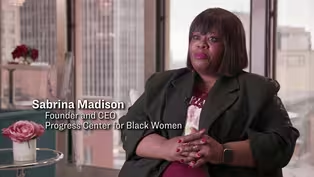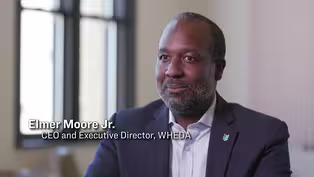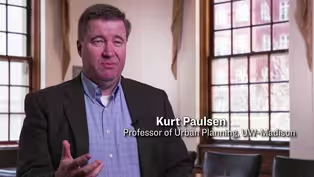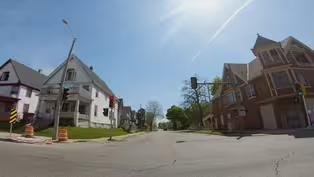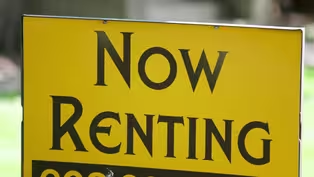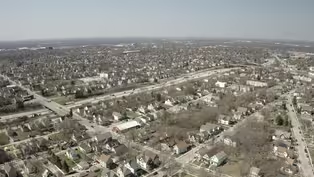
Anne Bonds on How Racially Restrictive Covenants Emerged
Clip: 10/4/2023 | 2m 44sVideo has Closed Captions
Anne Bonds on how racially restrictive covenants shaped housing segregation.
UW-Milwaukee geography professor Anne Bonds explains how racially restrictive covenants shaped housing segregation by blocking African Americans and other groups from purchasing and renting homes.
Problems playing video? | Closed Captioning Feedback
Problems playing video? | Closed Captioning Feedback
Wisconsin in Black & White is a local public television program presented by PBS Wisconsin
Funding for Wisconsin in Black & White is provided by the Ira and Ineva Reilly Baldwin Wisconsin Idea Endowment, DeAtley Family Foundation, Joe and Mary Ellyn Sensenbrenner, Lau and Bea...

Anne Bonds on How Racially Restrictive Covenants Emerged
Clip: 10/4/2023 | 2m 44sVideo has Closed Captions
UW-Milwaukee geography professor Anne Bonds explains how racially restrictive covenants shaped housing segregation by blocking African Americans and other groups from purchasing and renting homes.
Problems playing video? | Closed Captioning Feedback
How to Watch Wisconsin in Black & White
Wisconsin in Black & White is available to stream on pbs.org and the free PBS App, available on iPhone, Apple TV, Android TV, Android smartphones, Amazon Fire TV, Amazon Fire Tablet, Roku, Samsung Smart TV, and Vizio.
Providing Support for PBS.org
Learn Moreabout PBS online sponsorship>> Racially restrictive covenants began emerging after a key court case in 1917, which essentially struck down the practice of what is called racial zoning.
So racial zoning was a practice that took place in some US cities.
Milwaukee didn't have a formal racial zoning ordinance.
I'll return back to that in a moment.
But the court case basically said that cities couldn't designate certain parts of the city and say, "Only Black people can live here."
So that was in 1917.
Racial zoning is struck down and what we really see is that, you know, in that wake, they become much more widespread, restrictive covenants did.
In fact, in some instances, they're referred to as private zoning.
So they became widespread throughout many US cities, in fact, all across the country, really gaining momentum in the 1920s and the 1930s into the '40s.
And what we see is language varies from region to region and city to city according to the specific racial context in cities.
But what we know from scholars is that by 1928, about half of all homes that were owned by white people in the United States had some sort of a racially restrictive covenant.
So these were extremely widespread and used specifically for segregationist purposes.
>> Nathan: Was there a certain race of people or color of people that was specifically targeted by most of these?
>> Yep, absolutely.
Some covenants will list other races or ethnicities, but by and large, covenants were specifically targeting African Americans.
And in fact, you know, we can tie in certain areas, especially in northern cities like Milwaukee, how they were used as mechanisms to specifically target Black Americans as Black Americans were migrating to northern cities during the Great Migration.
So yes, some covenants will list a whole range of ethnicities or religions.
Jewish folks were targeted by these.
But in Milwaukee, we find that the language is very specifically, we don't see the listing out of ethnicities like we might see in other cities.
We see that, at least at this point in our efforts to document all the racial covenants, that they primarily use the language of no person other than the white race or Caucasian race may, you know, live on this property, or specifically language that uses, excuse the language and terminology, but colored or Negro.
So this property may never be conveyed, leased, or sold to a colored person.
That's a common phrase we also see in Milwaukee.
Sabrina Madison on Cultivating Wealth in Black Communities
Video has Closed Captions
Clip: 10/19/2023 | 2m 12s | Sabrina Madison on generating health and ownership among Wisconsin's Black residents. (2m 12s)
Elmer Moore, Jr. on Stress, Safety and Generational Outcomes
Video has Closed Captions
Clip: 10/18/2023 | 2m 17s | Elmer Moore, Jr. on investing in more secure home environments and trajectories of lives. (2m 17s)
Kurt Paulsen on Long-Term Impacts of Racist Housing Policies
Video has Closed Captions
Clip: 10/12/2023 | 1m 48s | Kurt Paulsen on discrimination and homeownership rates of Black families in Wisconsin. (1m 48s)
Theresa Garrison on Witnessing 'Urban Renewal' in Milwaukee
Video has Closed Captions
Clip: 10/11/2023 | 1m 50s | Theresa Garrison on memories of growing up in a neighborhood razed by "urban renewal." (1m 50s)
Derek Handley on Identifying Housing Discrimination
Video has Closed Captions
Clip: 10/5/2023 | 1m 51s | Derek Handley on understanding historical patterns of racist housing discrimination. (1m 51s)
Covenants, Redlining and Black Homeownership in Wisconsin
Video has Closed Captions
Clip: 10/3/2023 | 7m 30s | Racially restrictive covenants and redlining discrimination created segregated housing. (7m 30s)
Impacts of Housing Discrimination on Economic Opportunity
Video has Closed Captions
Clip: 10/1/2023 | 7m 3s | Housing discrimination has diminished opportunity for Black Wisconsinites to build wealth. (7m 3s)
What 'Urban Renewal' Meant for Milwaukee's Black Residents
Video has Closed Captions
Clip: 10/1/2023 | 6m 48s | Urban renewal projects sparked the open housing movement to end housing discrimination. (6m 48s)
Providing Support for PBS.org
Learn Moreabout PBS online sponsorship
- Culture

Trace Adkins joins the US Army Field Band in "Salute to Service 2025: A Veterans Day Celebration."













Support for PBS provided by:
Wisconsin in Black & White is a local public television program presented by PBS Wisconsin
Funding for Wisconsin in Black & White is provided by the Ira and Ineva Reilly Baldwin Wisconsin Idea Endowment, DeAtley Family Foundation, Joe and Mary Ellyn Sensenbrenner, Lau and Bea...
